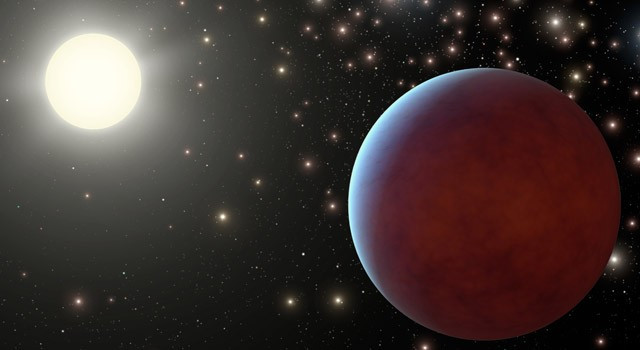Two Unique Jupiter-like Planets Found in Star Cluster

Two Jupiter-like planets have been spotted orbiting sun-like stars in a crowded cluster of stars, researchers from Nasa, Georgia State University in Atlanta and the Harvard-Smithsonian Center for Astrophysics have found.
The two new exo-planets, Pr0201b and Pr0211b, are located in the Beehive Cluster, also called the Praesepe cluster. The new planets could offer the best evidence yet that planets can sprout in dense stellar environments, the researchers say.
Their discovery was made while analysing data obtained from 1.5-metre Tillinghast telescope at the Smithsonian Astrophysical Observatory's Fred Lawrence Whipple Observatory in Arizona. The telescope measures the slight gravitational wobble the orbiting planets induce on their host stars.
Data retrieved from the telescope found that the temperature in Pr0201b and Pr0211 planets is boiling hot because the two planets orbit very close to their parent stars.
Previously, astronomers believed that gaseous planets cannot form too close to a star because they would evaporate, according to an AFP report. Astronomers have now found that Jupiter-like planets can be formed very close to the stars.
Another stunning discovery is that, for the first time, researchers have found Jupiter-like planets orbiting sun-like star in a star cluster.
"We are detecting more and more planets that can thrive in diverse and extreme environments like these nearby clusters," said Mario R Perez, astrophysics programme scientist at Nasa. "Our galaxy contains more than 1,000 of these open clusters, which potentially can present the physical conditions for harbouring many more of these giant planets."
Sam Quinn, a graduate student in astronomy at Georgia State University in Atlanta, said this had been a big puzzle for planet hunters. "We know that most stars form in clustered environments like the Orion nebula, so unless this dense environment inhibits planet formation, at least some sun-like stars in open clusters should have planets. Now, we finally know they are indeed there."
One of the reasons these Jupiter-like planets were formed in the Beehive cluster is they are rich in metals. Stars in the Beehive have more heavy elements such as iron than the sun has.
"Searches for planets around nearby stars suggest that these metals act like a 'planet fertiliser,' leading to an abundant crop of gas-giant planets. Our results suggest this may be true in clusters as well," said Russel White, principal investigator on the Nasa Origins of Solar Systems.
© Copyright IBTimes 2025. All rights reserved.





















